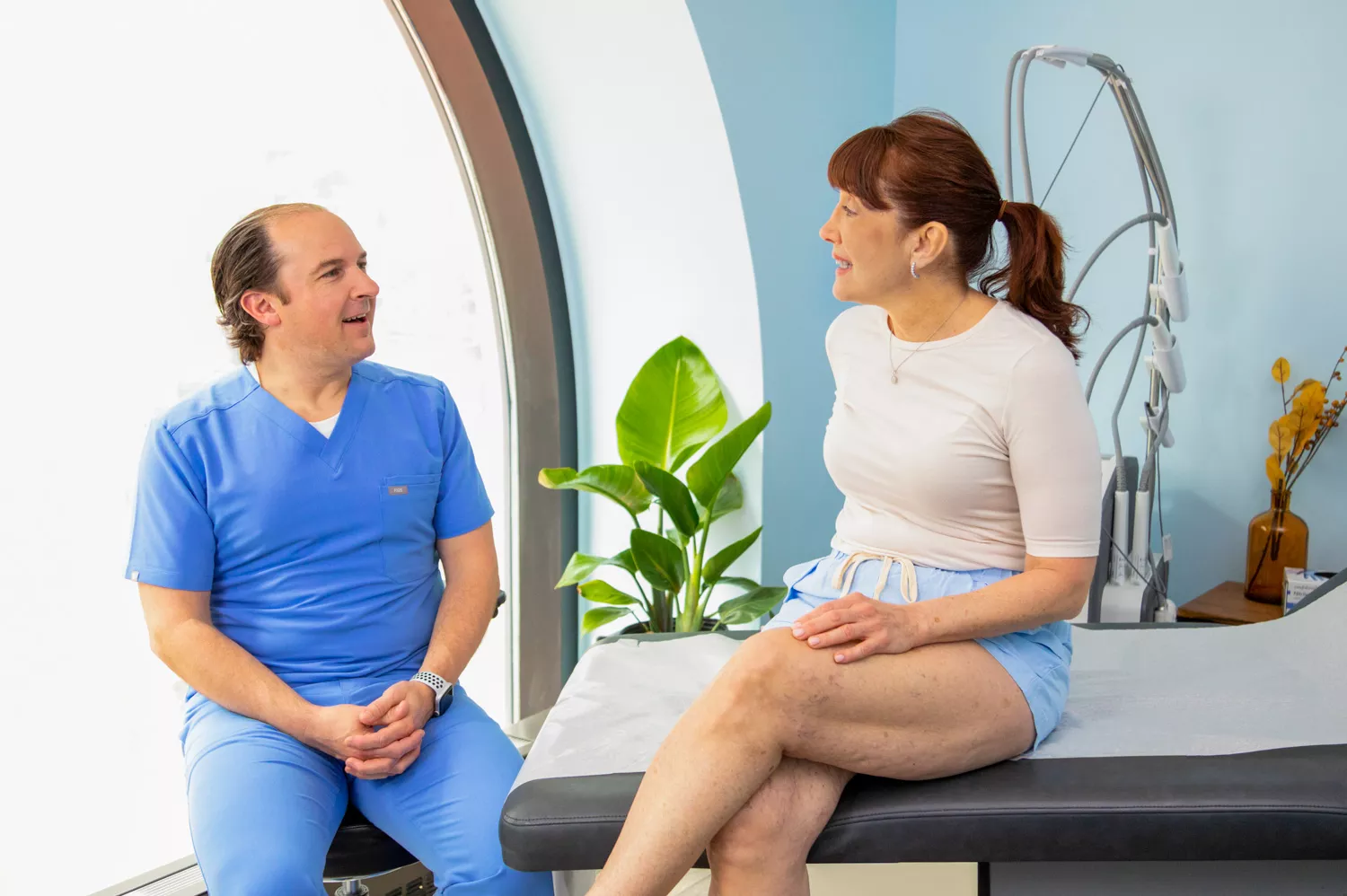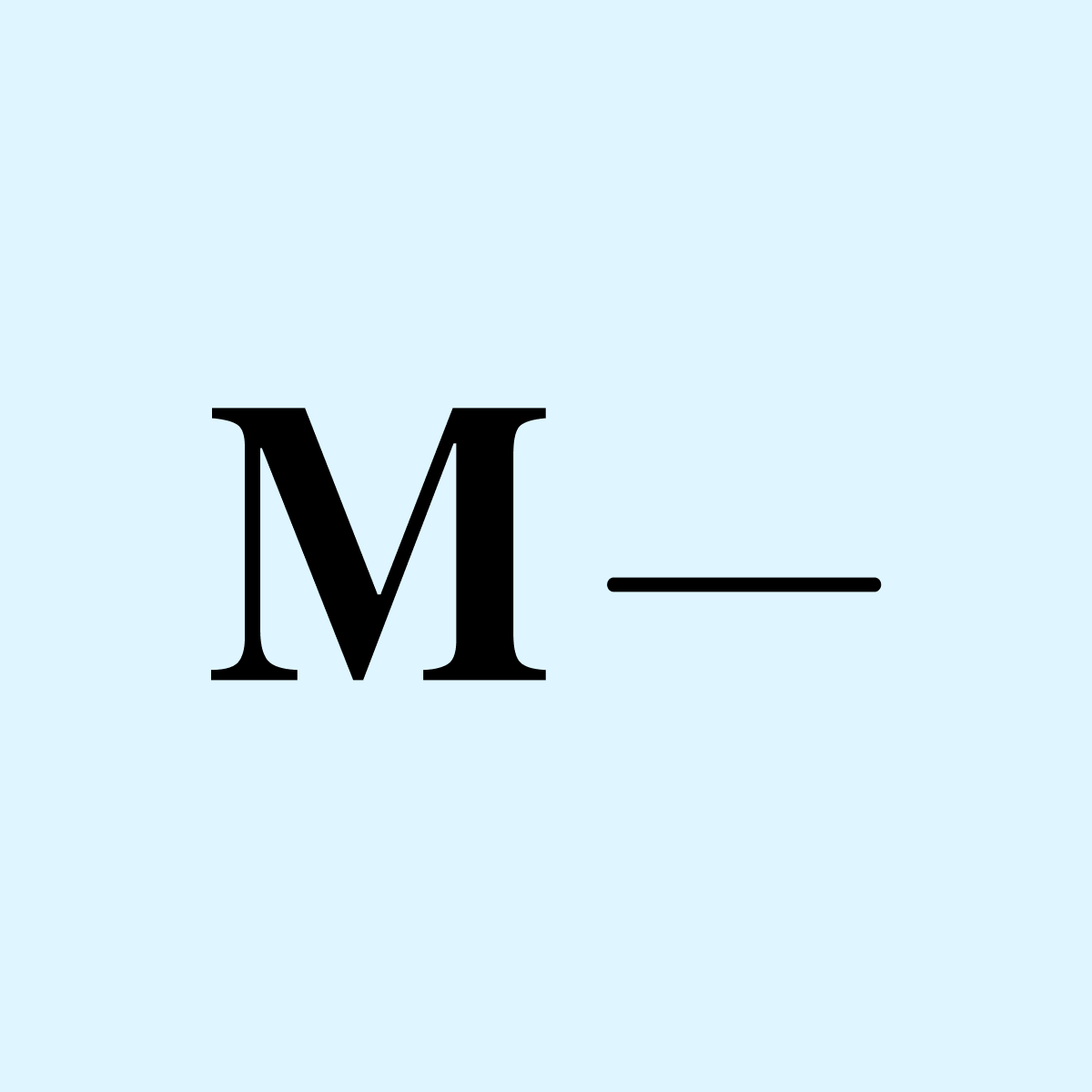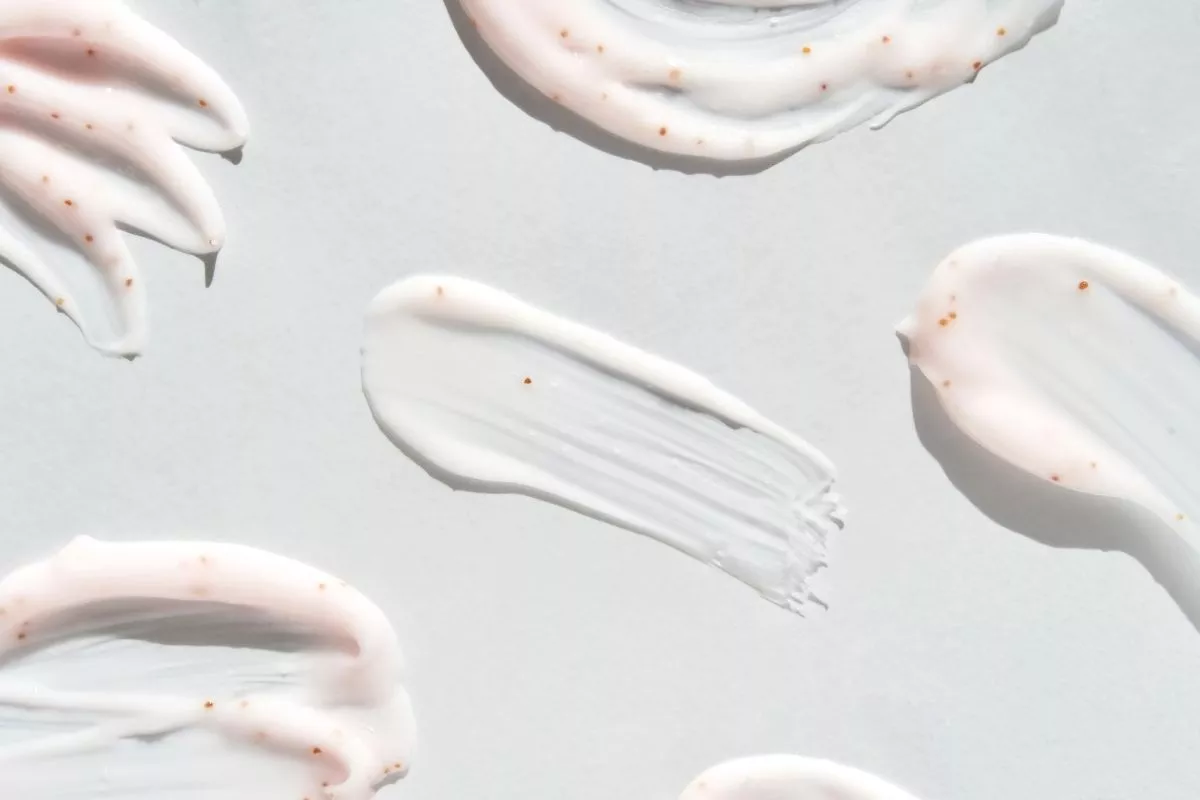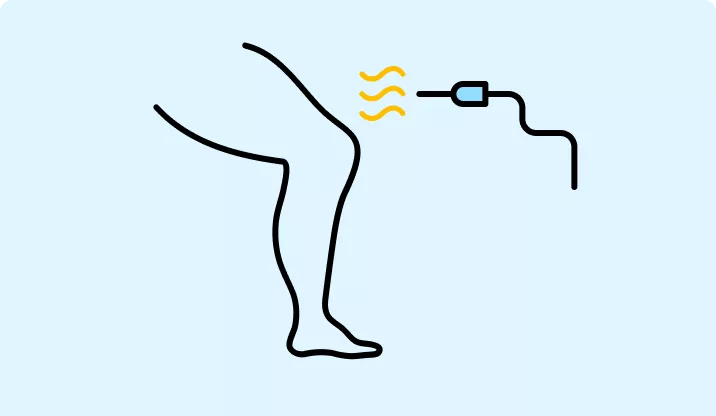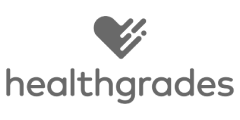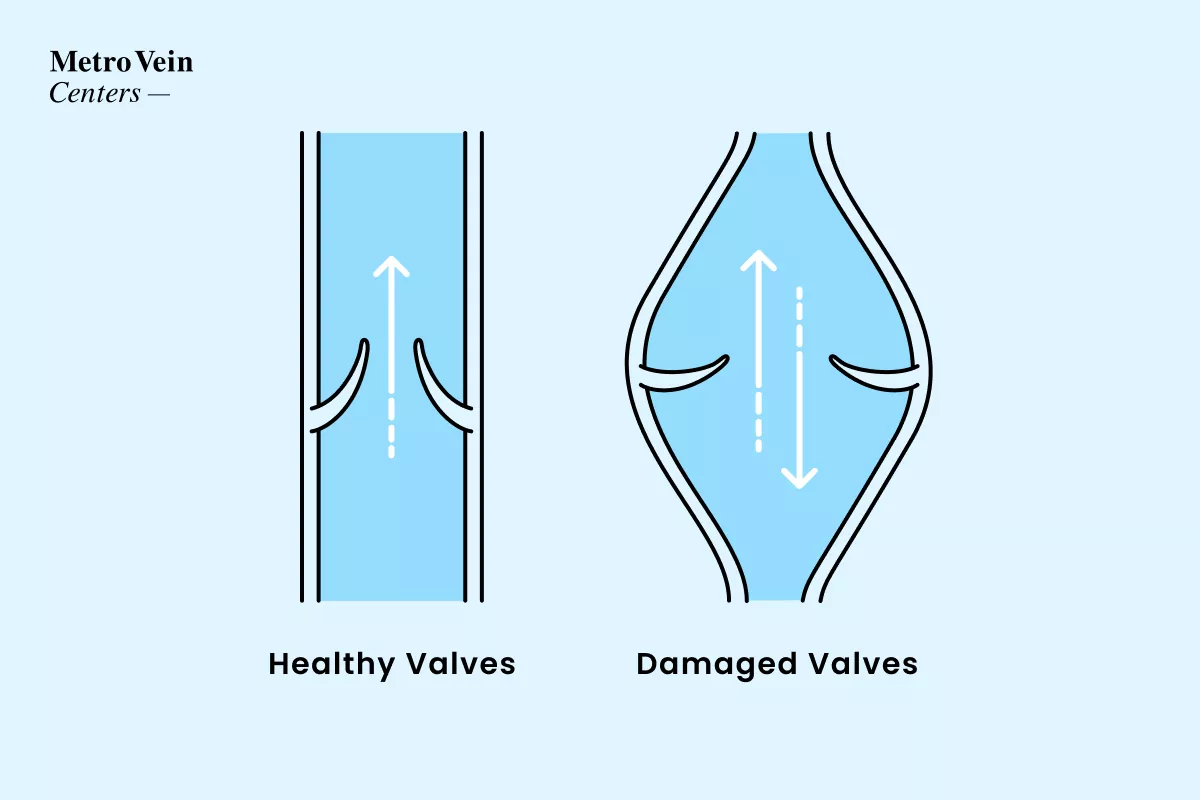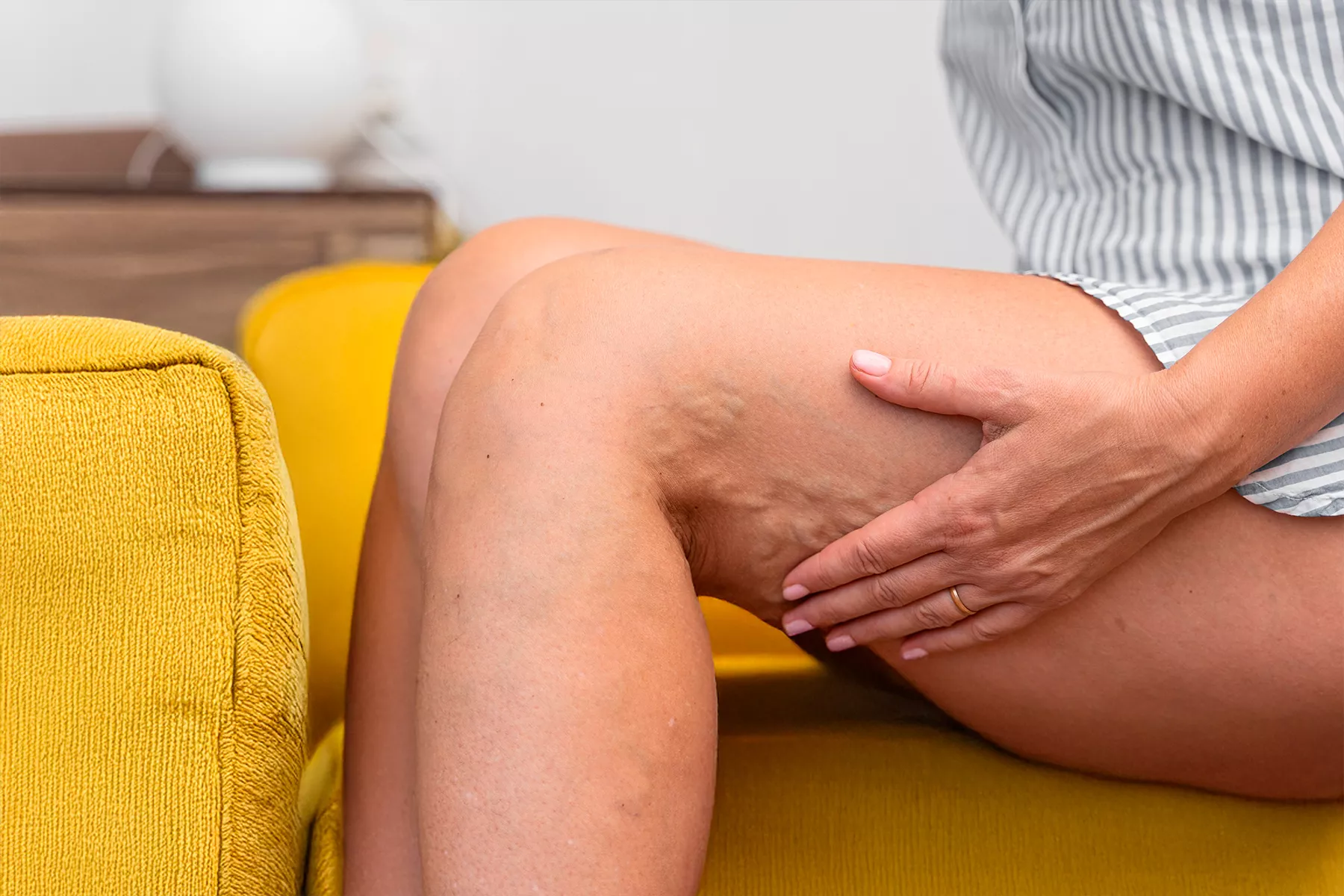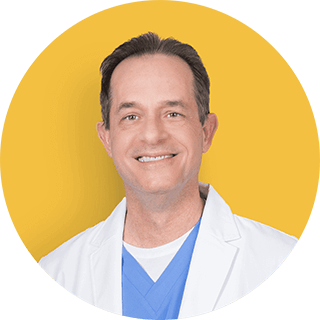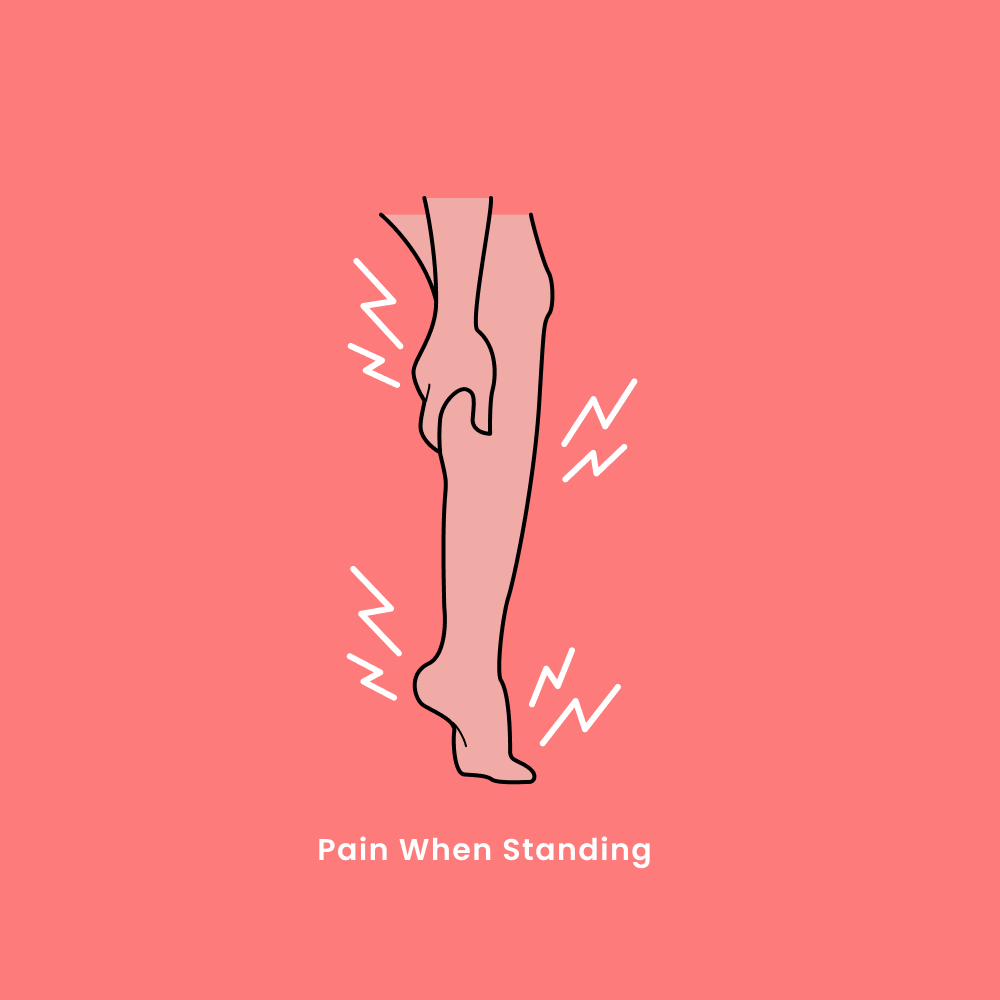
Pain While Standing
Leg pain when standing is a symptom of vein disease that the majority of people experience. Pain while standing affects mobility and general functionality throughout your day-to-day, and thus is one of the more frustrating and common symptoms of vein disease.
What causes pain when standing?
Leg pain and discomfort that arises when you’re upright is a sign that your veins are struggling with proper circulation against the force of gravity. Your veins and circulatory system in general work exceptionally hard to pump blood from your toes back up to your heart, working against factors like bodyweight and general downward gravitational pull. When the valves in the veins are not working properly and varicose veins have formed, your circulatory system’s job becomes even harder. This lack of proper circulation can cause swelling, cramping, and pain when upright and visible symptoms such as varicose and spider veins.
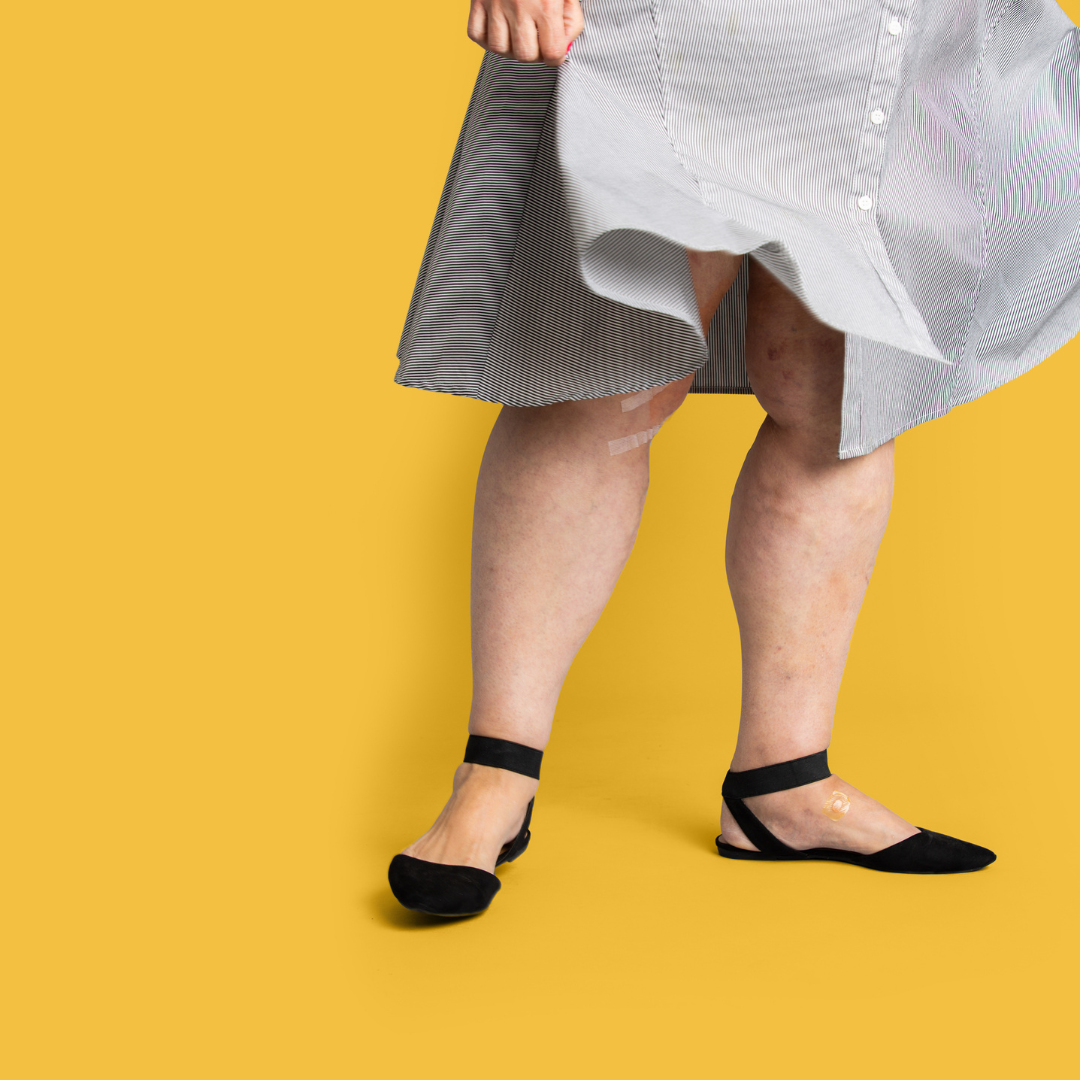
Is pain when standing dangerous?
Mild to moderate pain while standing is not immediately dangerous but is a common sign of chronic venous insufficiency, which suggests that you have valves in your veins that are no longer functional or keeping your blood moving well. Patients who experience pain while standing often describe a burning, itching, swollen feeling that causes them to avoid standing, exercising, or being upright for long periods. While it may seem like just a sign of aging, pain while standing is not normal and should be investigated by a board-certified vein specialist as soon as possible, to prevent vein disease from progressing to more advanced stages that can include ulcers or deep vein thrombosis (blood clots).
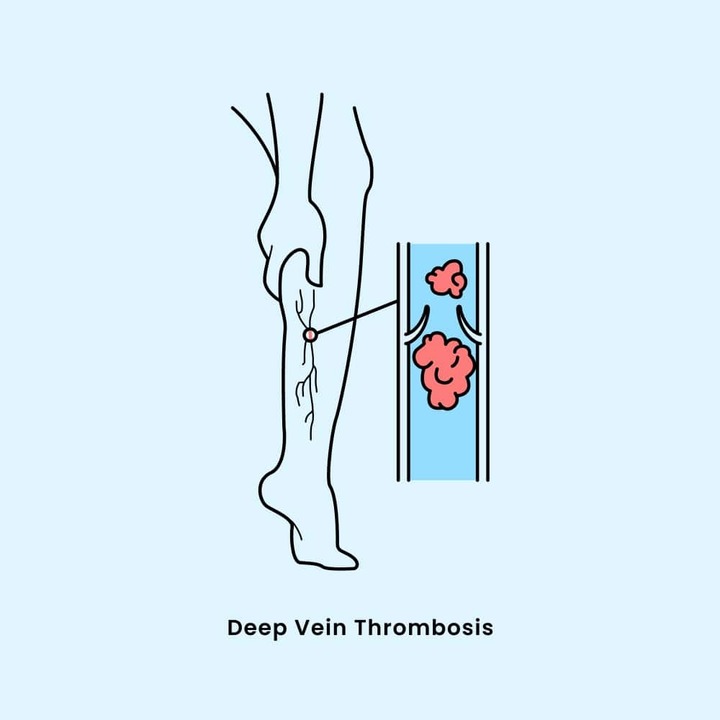
What are the risk factors for pain while standing?
Because the root cause of vein disease may be a genetic or hereditary issue, there may not always be a clear “risk” that leads to varicose vein complications like poor circulation and resulting pain when standing. However, there are some factors that make a person more likely to develop varicose veins and related symptoms.
Do you ...
- Smoke?
- Have children?
- Know a family member with varicose veins or other vein diseases?
- Take hormonal birth control?
- Work a job that requires long hours of sitting or standing?
- Lead a sedentary lifestyle?
- Have diabetes?
Are you ...
- A pregnant or postpartum woman?
- Over the age of 40?
- Diagnosed as overweight?
Women are more likely to develop varicose veins and related complications than men, as fluctuations or spikes of the estrogen hormone are linked to vein disease. Family and/or medical history play a significant role in the appearance of venous insufficiency and varicose veins. Most people who have varicose veins also know a family member with spider veins, varicose veins, or a form of vein disease.
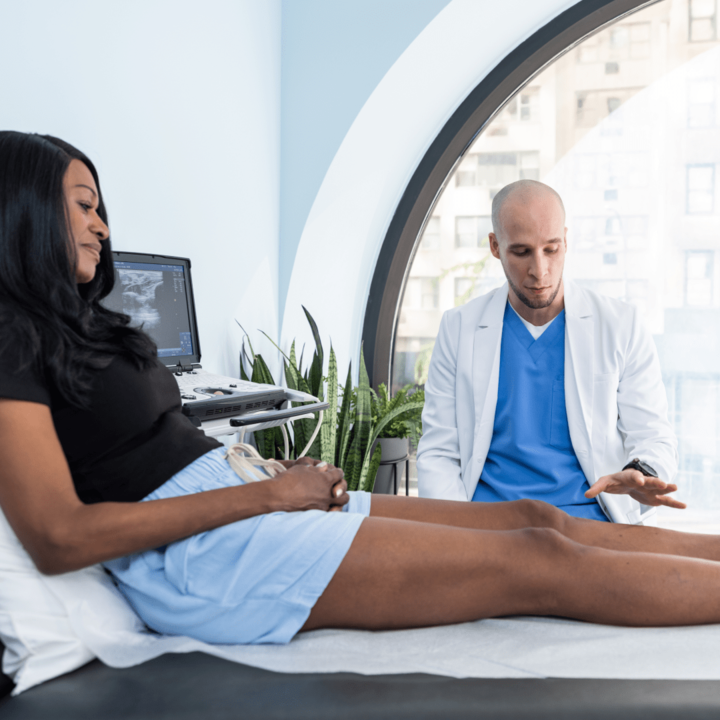
What can you do to treat and remedy pain when standing?
No pain is normal. If you are experiencing pain that affects your ability to complete your daily tasks, or that has negatively impacted your level of mobility, our vein specialists are here to help. Poor circulation is one of the most common causes of venous issues that result in pooling blood. Pain when standing can be eradicated when the root cause of vein disease is addressed with targeted, minimally invasive treatments. Our vein specialists will conduct a free vein evaluation to better understand your pain levels and any additional symptoms. We pride ourselves on patient-focused care: We customize treatment plans to each patient’s specific concerns. Because varicose veins and related pain are so often caused by greater underlying factors like poor circulation, treating this health concern may eliminate your symptoms and also remove your visible veins.
Our vein doctors treat varicose veins with minimally invasive, state-of-the-art technologies. Injectable medicines such as varithena and sclerotherapy work on smaller varicose veins. Radiofrequency ablation and endovenous laser ablation can tackle larger varicose veins by using heat and pulsing radiofrequency energy to gently seal the diseased vein. VenaSeal is a medical-grade bioadhesive that seals varicose veins to redirect blood flow, and does not require the use of compression socks after treatment. Microphlebectomy removes a small portion of the malfunctioning vein for immediate results.
To find the treatment best suited for your specific concerns and symptoms, it’s always best to consult with a board-certified vein doctor or vein specialist, and the sooner the better — especially if you are experiencing pain! Vein disease is progressive, which means it worsens over time if left untreated, and the only way to diagnose vein disease is to be evaluated by professionals. We accept more than 200 insurance plans and are happy to discuss the details with your vein specialist, who will develop a custom treatment plan for your unique needs. Give us a call! We’re here to help.
For more information on pain while standing and varicose veins, book a free evaluation at one of our accredited vein clinics nearest you. We can be reached at 866-629-9848 with any questions.
Pain While Standing Myth Busting Q&A
Patients are often surprised that their leg pain is related to vein disease because they assumed their aches and pain while standing originated from the normal aging process. If your pain is not connected to a recent injury or muscle strain from strenuous exercise, and if you have visible veins or a family history of vein disease, your pain may be caused by poor circulation or varicose veins! Understanding your body’s risk factors and warning signs is crucial in knowing when to take the first steps toward vein treatment.
However, if you’re concerned or even merely curious about how your vein health may be causing symptoms such as leg pain, we recommend a free vein evaluation in one of our vein clinics. The best way to put your mind at ease is to speak with a vein specialist directly so they can address your symptoms, concerns, and find a solution for your pain.
Although an over-the-counter cream may be a solution for muscle aches or stiffness, they are not going to be effective for pain related to poor circulation in your veins —neither temporarily nor in the long run. Because your veins are beneath layers of skin, and because the problem is often within the vein itself (malfunctioning valves), no creams, ointments, oils, or topical pain relief will reach the problem area. Even if your varicose veins are bulging against the surface of your skin, they’re deeper than they appear, and the molecules of topical creams are far too big to pass through all those layers.
Over-the-counter remedies, especially those designed for the skin, will not only fail to offer relief but may also be robbing you of finding a permanent solution. Vein disease is progressive, and symptoms worsen the longer they are left untreated. FDA-approved vein treatments from board-certified vein doctors can treat vein concerns beneath the surface of the skin with ease, precision, and without pain. Skip the creams and look for a more lasting solution!
Pain when standing is a notable, common symptom that many patients with vein disease experience. However, it is not the only sign of vein disease, nor is it the only way that vein disease can manifest painfully. If you experience pain while upright, but can’t get comfortable at night due to restless legs, or if you can’t figure out that persistent itch on your leg, you may well have vein disease. Each patient presents with unique symptoms, and there is no one-size-fits-all diagnosis.
Pain is not normal, and vein disease (while common) is different for every person who experiences it. Even if you can’t see visible varicose veins, if you experience swelling, painful, cramping legs when you stand, you don’t have to wait for new symptoms to arise. Come on in for your free evaluation, and our team of specialists will investigate your pain and determine whether or not the source is vein disease.
How do Vein Treatments Work?
Vein treatments work by closing off unhealthy veins, just in different ways! Once closed, blood flow naturally reroutes through neighboring healthy veins.
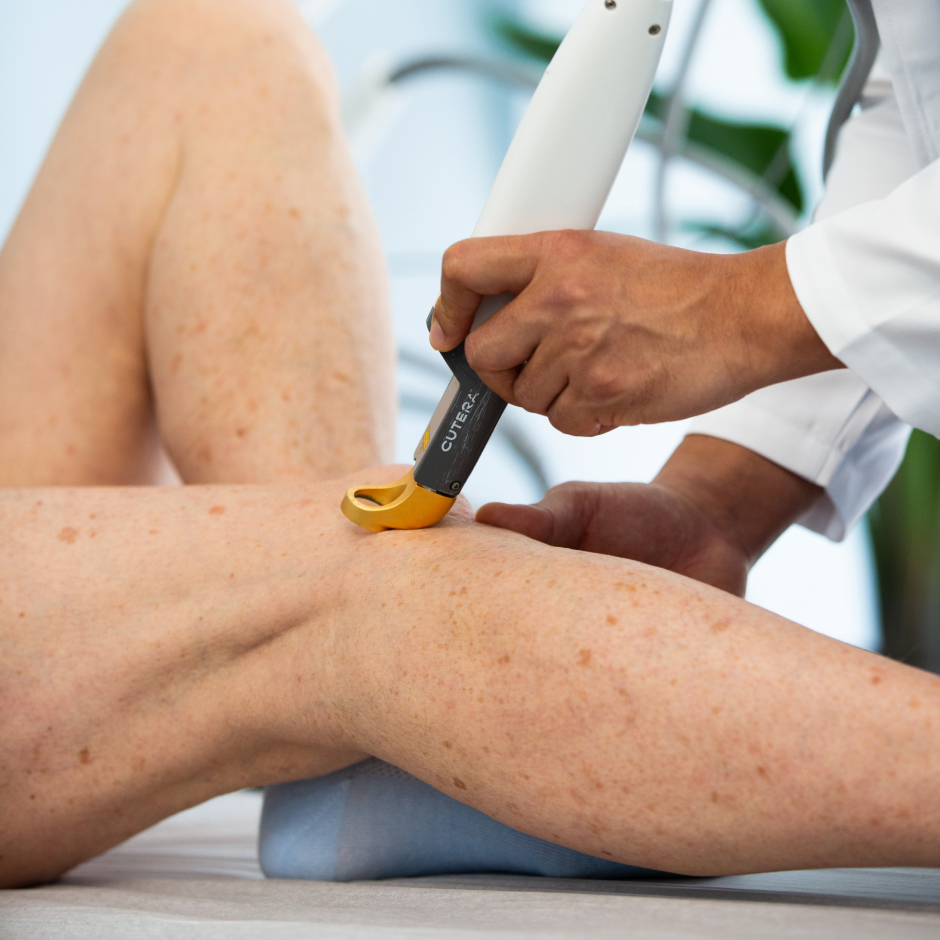
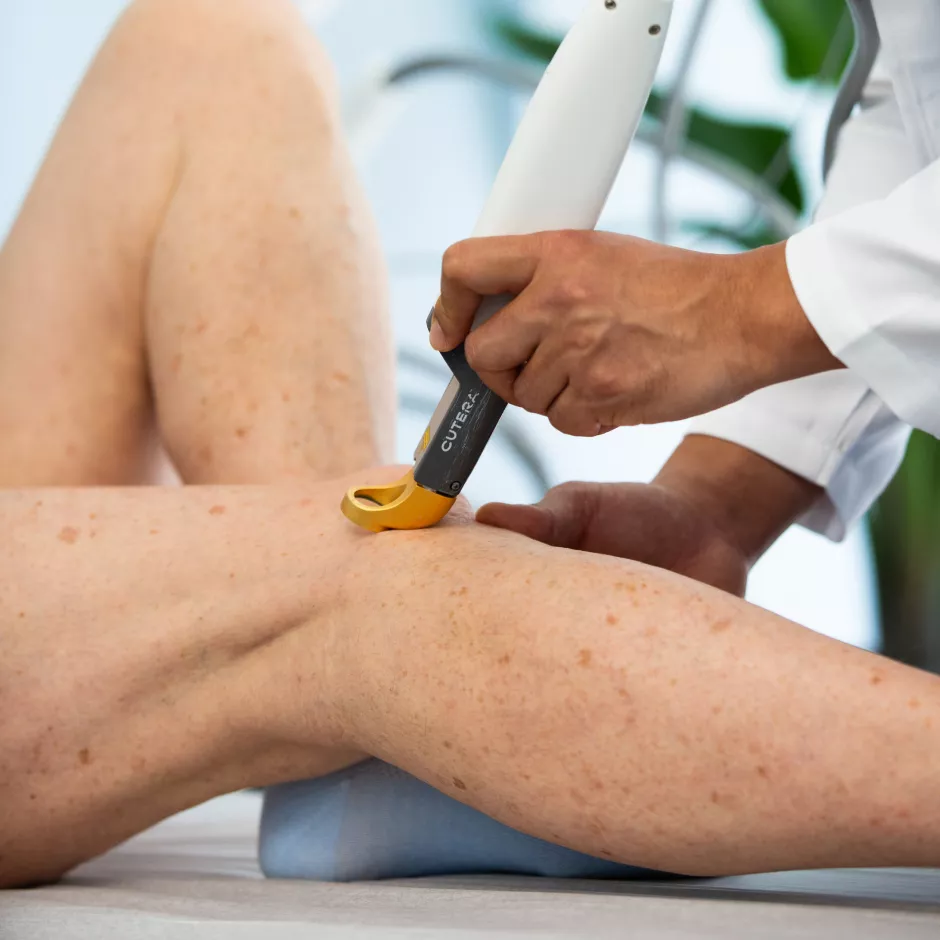
Pain While Standing Treatments
- State-of-the-Art
- Ultrasound Guided
- Less Than 30 Minutes
- FDA-Approved
- Minimally Invasive
- Minimal Downtime
Let’s talk about you
What are your veins like?
Get a snapshot of your vein health in just a few clicks.


